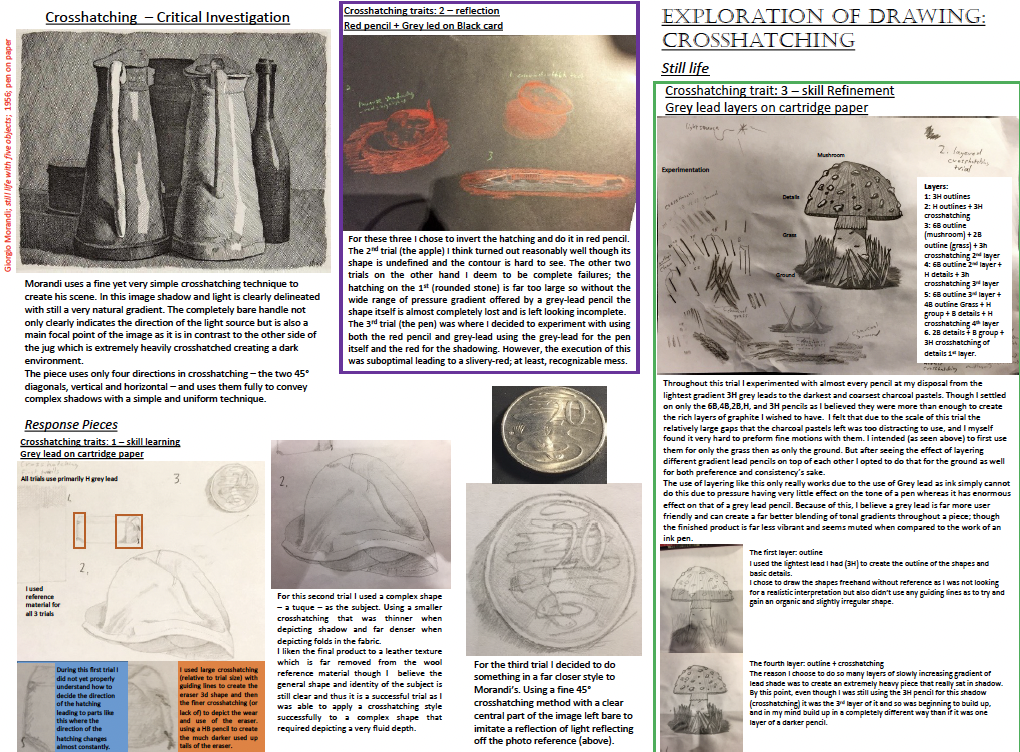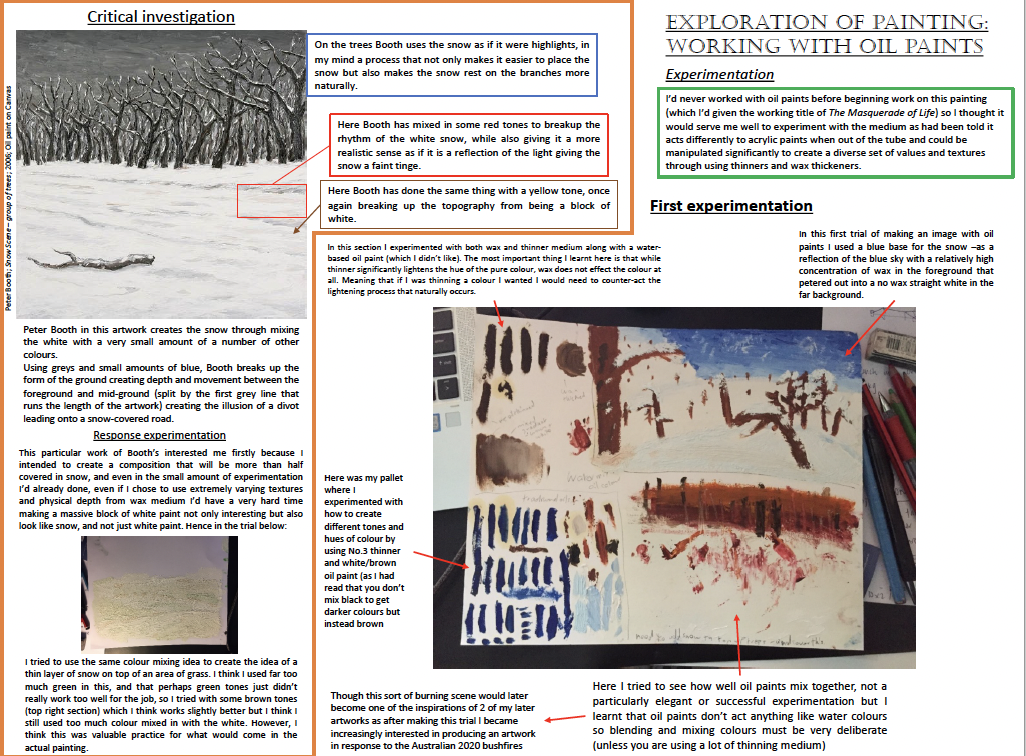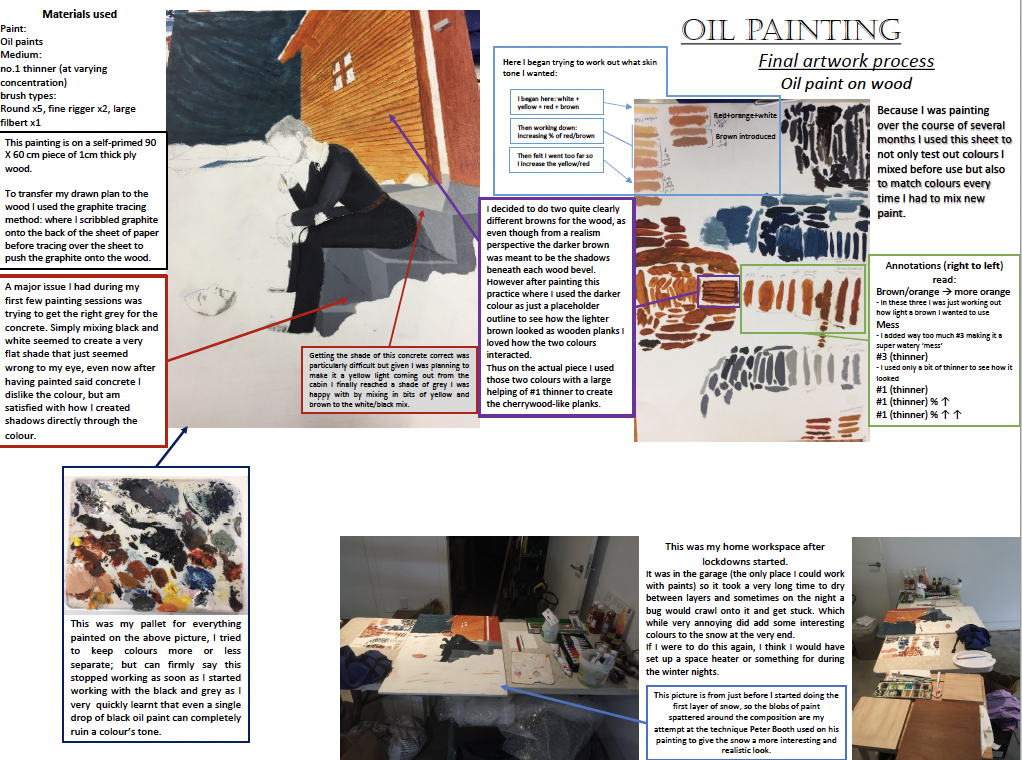IB Visual Arts
Matthew Bethune
The artworks in my exhibition spring from an overall concept of different human perspectives, engaging the audience by either giving viewers a perspective to see the artworks in or a perspective to scrutinise through their own. This central concept is explored differently in all artworks; each made in a different art form and upon different media – allowing even their construction to mirror the central concept of differing human perspectives. Audience engagement is reflected in the different subject-matter and exhibition presentation; physically separated into two distinct triads by both subject and engagement method.
The first triad all have figure subjects – the installation is a metaphorical figure. The works elicit audience engagement through forcing the viewer into an active perspective that is looking in at another perspective (the perspective held by or towards the figure). In the painting and drawing, the main figure both explore a person’s inner view of themselves, with the audience forced into the role of someone given access to their metaphysical safe place: a cold, isolated snowy cabin – the same setting is used to very different effects in each. The cabin in both represents an escape from the judgement of society; which in the painting has caused the figure to lose a sense of ‘true’ self/identity and in the drawing caused the figure crippling social anxiety feeling even their most private moments are under societal scrutiny. However, the drawing is presented inside the cabin using the setting to show even their isolated cabin; in the privacy of a bathroom, has been violated, first by the viewer; looking in at them through an ajar door, and second by the mirror symbolising that even when alone the figure feels the pressure of social judgement. In the painting by contrast, the figure wilfully sits outside in the harsh conditions, unable to enter a place where his is safe to be himself, when he knows not who that is.
The second triad represent different human perspectives on ambivalent natural subjects, inviting the viewer to consider the multiple perspectives offered on the subject in the artworks; inviting them to comparing to the viewer’s own. The two sister pieces both respond to the 2020 Australian bushfires and are made from the same larger waste-wood offcut of a native tree that grew in the affected areas. The pieces explore different views on bushfires, with their connection to each other and the inspiration strengthened by their ‘canvas’ being literally part of the same whole.






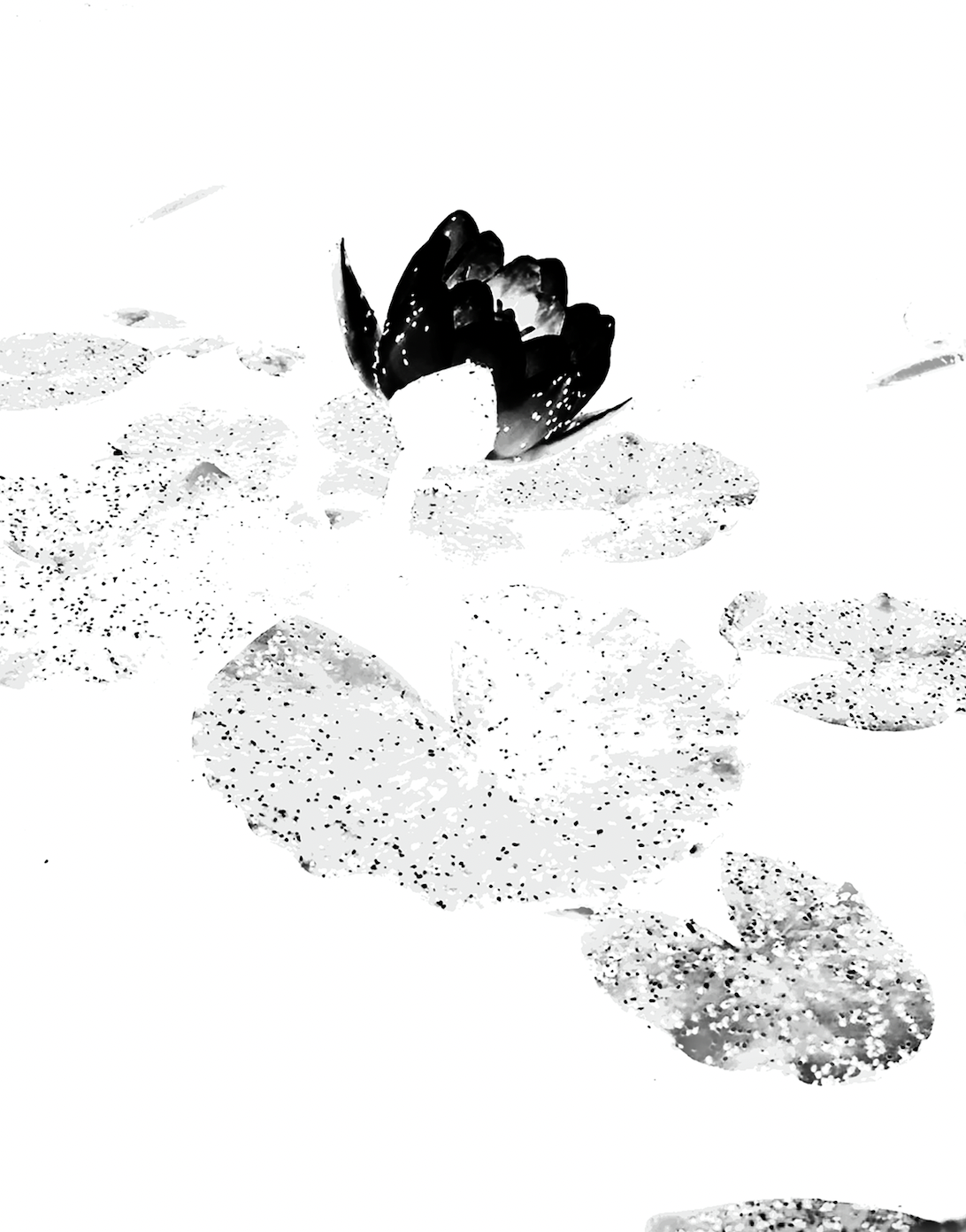

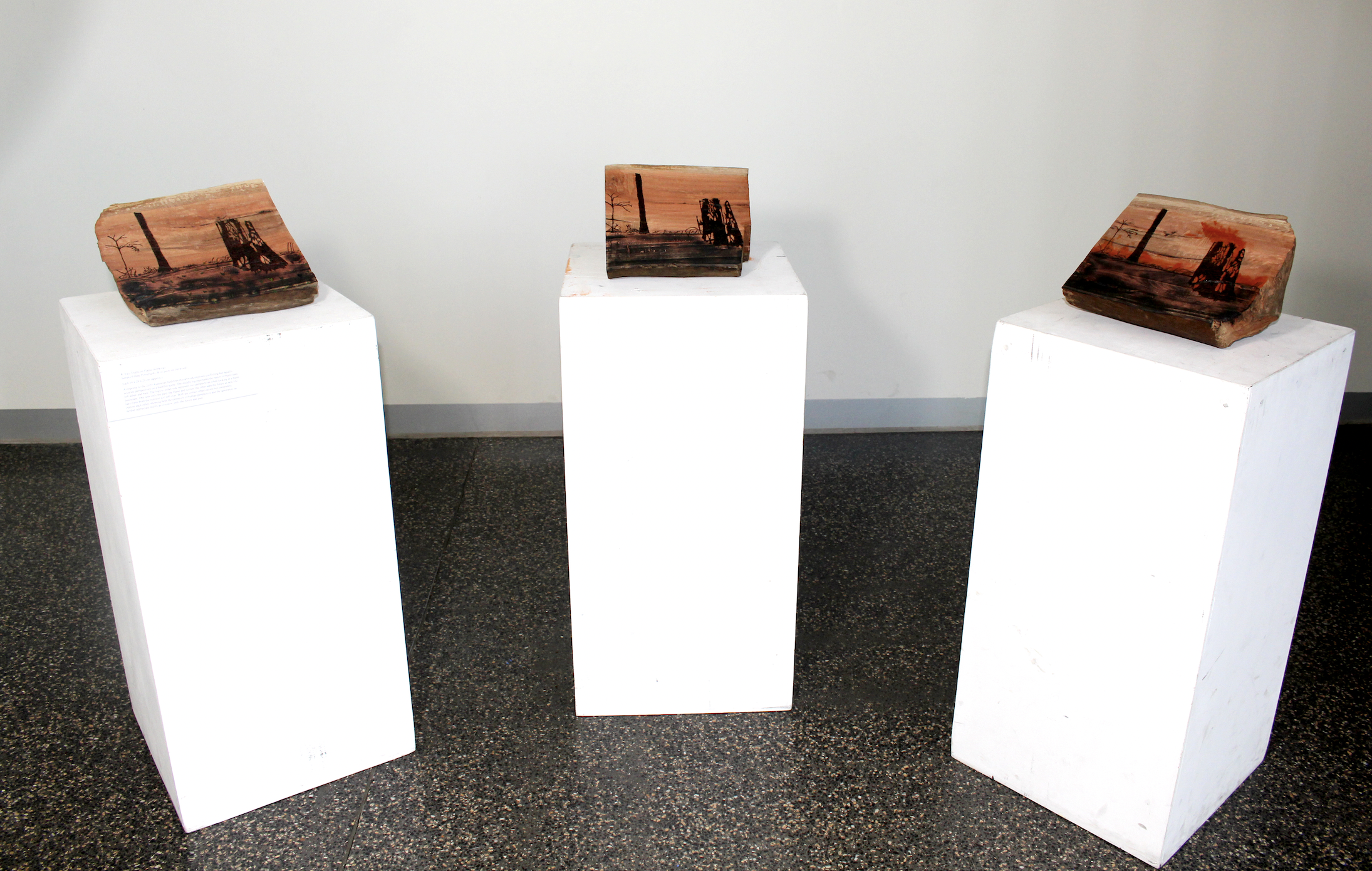



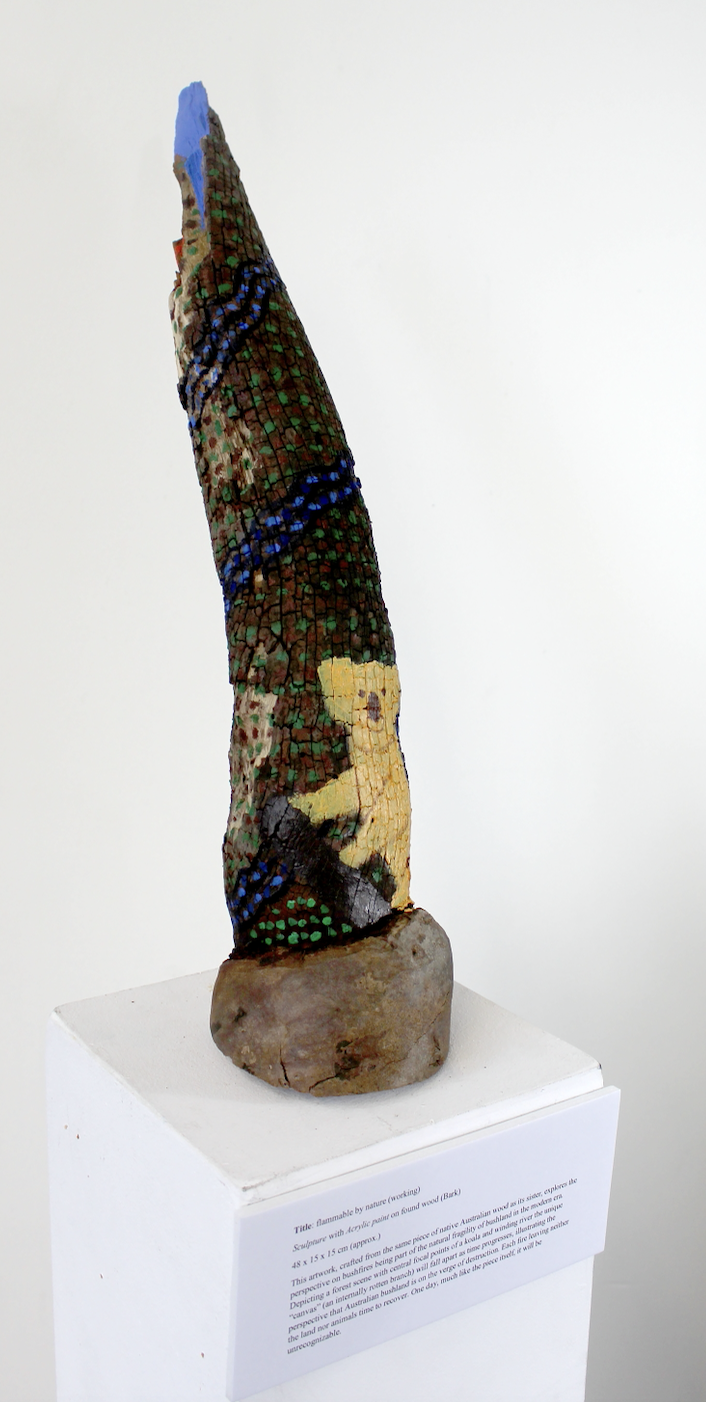
Matthew Bethune
The Masquerade of Life
Pencil Drawing on Paper
42 x 30 cm (approx.)
The artwork forces viewers into the perspective of an intruder within the figure’s metaphysical safe space. Where what should be private and sheltered: is dark, colorless and violated. The viewer looks in on the figure from a slightly perverse angle, in the mirror she cannot see herself but a figure with a camera for a face, showing how societal scrutiny of her body has invaded even the most secluded parts of her mind. The camera leads the viewer to separate the mirror figure from any one person but instead as a manifestation of society.
The Masquerade of Self
Oil paint on Wooden Board
90 x 59 x 1 cm (approx.)
Sister to the Drawing, this artwork allows the viewer into the private metaphysical world of the figure; the safe space they retreat to when life gets too hard. By placing the face in the snow and leaving the figure faceless, viewers are taken into the mind of a person who feels they lack any real identity or self, wearing different masks for different circumstances. In the process of which they have lost any definite sense of self. Leaving even their most private safe space cold and rejecting.
Rot
Installation Chicken egg in resin, printed poem and found objects: table, linen cloth, plinth, candle stick, candles, fresh roses, glass vase
116 x 56 x 58 cm (approx.)
A satirical take on the idiom they’re a rotten egg the piece plays with how people can deify the dead; forgetting their flaws or wrongdoings, as one mustn’t speak ill of the dead. Presenting a preserved rotten egg upon a shrine inspired by home memorials, a stark contrast is created. This is intended to lead the viewer to take a judgmental perspective on those who deified this egg. My own poem that sits beneath the egg actively directs the viewer to this position through the words of an ambivalent speaker.
Filtered Flower
Series of 1 photograph, 4 Digital edited Photographs, 1 Lino-cut Print
Overall size: 153 x 31 cm (approx.)
In this artwork the filtered perspectives people have on the natural world are explored. When presented with a simple case, a lily, there are various ways people may see it:
a vibrant appreciation of nature’s beauty – ignorant of its woes. Or those who see only the opposite; an aphid infestation threatening to destroy nature’s beauty – a view that fails to actually see said splendor. Some people move through nature perceiving only select focal points, greying out details deemed superfluous. Leading to a final view from people who choose not to see nature at all, perceiving solely the outlines and shapes of useful items.
Two Truths on Flame
Series of three Pyrography & oil paint on cut wood
Each 18 x 28 x 28 cm (approx.)
A response to the 2020 Australian bushfires this artwork explores conflicting but equally accurate perspectives on a bushfire scene. The middle log represents the reality of burnt land, left ashen and bare, the process of pyrography reflects the charred environment. The logs to either side represent two perspectives when looking at a burnt landscape. One sees only the past, the flame and scorch; the other sees the future as new life takes roots from the nutrient soil left over. Both are correct observations but completely oppose each other, showing both the extremity of human perspective and the ignorance; as neither appreciate reality as it is now, only the future and past.
Flammable by nature
Sculpture with Acrylic paint on found wood (Bark)
48 x 15 x 15 cm (approx.)
This artwork, crafted from the same piece of native Australian wood as its sister, explores the perspective on bushfires being part of the natural fragility of bushland in the modern era. Depicting a forest scene with central focal points of a koala and winding river the unique “canvas” (an internally rotten branch) will fall apart as time progresses, illustrating the perspective that Australian bushland is on the verge of destruction. Each fire leaving neither the land nor animals time to recover. One day, much like the piece itself, it will be unrecognizable.
PROCESS PORTFOLIO

